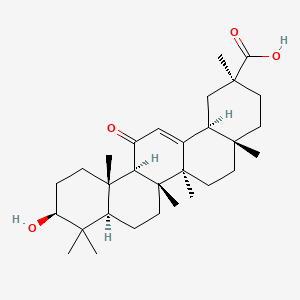| Authors | Title | Published | Journal | PubMed Link |
|---|---|---|---|---|
| Luksha L et al. | Endothelium-derived hyperpolarizing factor in preeclampsia: heterogeneous contribution, mechanisms, and morphological prerequisites. | 2008 | Am. J. Physiol. Regul. Integr. Comp. Physiol. | pmid:18032472 |
| Yamanouchi K et al. | 18alpha-glycyrrhetinic acid induces phenotypic changes of skeletal muscle cells to enter adipogenesis. | 2007 | Cell. Physiol. Biochem. | pmid:17982260 |
| Yamamoto Y et al. | Role of gap junctions and protein kinase A during the development of oocyte maturational competence in Ayu (Plecoglossus altivelis). | 2008 | Gen. Comp. Endocrinol. | pmid:17964574 |
| Lang RJ et al. | Spontaneous electrical and Ca2+ signals in typical and atypical smooth muscle cells and interstitial cell of Cajal-like cells of mouse renal pelvis. | 2007 | J. Physiol. (Lond.) | pmid:17656432 |
| Ikeda Y et al. | Role of gap junctions in spontaneous activity of the rat bladder. | 2007 | Am. J. Physiol. Renal Physiol. | pmid:17581924 |
| Guan BC et al. | Blockade of gap junction coupling by glycyrrhetinic acids in guinea pig cochlear artery: a whole-cell voltage- and current-clamp study. | 2007 | Br. J. Pharmacol. | pmid:17572704 |
| Lin D et al. | Protein kinase C gamma mutations in the C1B domain cause caspase-3-linked apoptosis in lens epithelial cells through gap junctions. | 2007 | Exp. Eye Res. | pmid:17493614 |
| Kamioka H et al. | Primary cultures of chick osteocytes retain functional gap junctions between osteocytes and between osteocytes and osteoblasts. | 2007 | Microsc. Microanal. | pmid:17367550 |
| Kamijo M et al. | The function of connexin 43 on the differentiation of rat bone marrow cells in culture. | 2006 | Biomed. Res. | pmid:17213685 |
| Miyazato M et al. | A gap junction blocker inhibits isolated whole bladder activity in normal rats and rats with partial bladder outlet obstruction. | 2006 | Biomed. Res. | pmid:17099284 |
18alpha-glycyrrhetinic acid
18alpha-glycyrrhetinic acid is a lipid of Prenol Lipids (PR) class. 18alpha-glycyrrhetinic acid is associated with abnormalities such as Wiskott-Aldrich Syndrome. The involved functions are known as inhibitors, salivary gland development and branching morphogenesis.
Cross Reference
Introduction
To understand associated biological information of 18alpha-glycyrrhetinic acid, we collected biological information of abnormalities, associated pathways, cellular/molecular locations, biological functions, related genes/proteins, lipids and common seen animal/experimental models with organized paragraphs from literatures.
What diseases are associated with 18alpha-glycyrrhetinic acid?
18alpha-glycyrrhetinic acid is suspected in and other diseases in descending order of the highest number of associated sentences.
Related references are mostly published in these journals:
| Disease | Cross reference | Weighted score | Related literature |
|---|
No disease MeSH terms mapped to the current reference collection.
PubChem Associated disorders and diseases
What pathways are associated with 18alpha-glycyrrhetinic acid
There are no associated biomedical information in the current reference collection.
PubChem Biomolecular Interactions and Pathways
Link to PubChem Biomolecular Interactions and PathwaysWhat cellular locations are associated with 18alpha-glycyrrhetinic acid?
There are no associated biomedical information in the current reference collection.
What functions are associated with 18alpha-glycyrrhetinic acid?
Related references are published most in these journals:
| Function | Cross reference | Weighted score | Related literatures |
|---|
What lipids are associated with 18alpha-glycyrrhetinic acid?
There are no associated biomedical information in the current reference collection.
What genes are associated with 18alpha-glycyrrhetinic acid?
There are no associated biomedical information in the current reference collection.
What common seen animal models are associated with 18alpha-glycyrrhetinic acid?
There are no associated biomedical information in the current reference collection.
